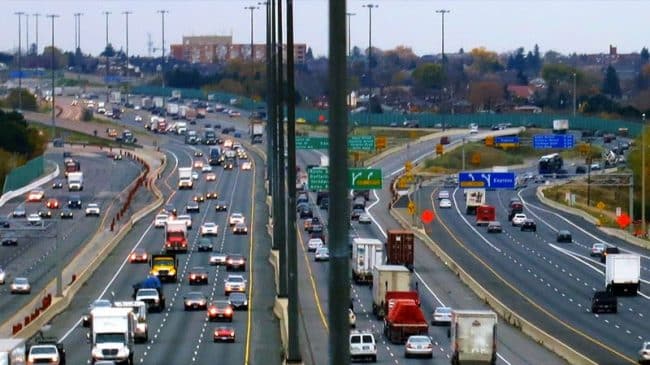Five years ago I lamented political opposition in California to increasing the carpool requirement for free passage in HOT lanes from two to three people. While most such lanes in California are still stuck with that policy, the picture has changed dramatically around the country-and that is bullish for more managed lanes projects being procured as P3 concessions.
As of now, there are at least 10 managed lanes projects in operation that require three or more persons in the car (HOV-3+) for free or reduced-price passage. These include the original SR 91 in California; projects involving HOV-lane conversion plus new construction on I-95 in Miami and Virginia, I-405 in Seattle, and US 36 in Denver; and the all-new construction of the LBJ and NTE projects in Dallas/Fort Worth. Similar projects now under construction (or close to construction) are I-66 in northern Virginia and I-77 in Charlotte.
In even greater contrast to five years ago, there are now three projects in operation that charge all personal vehicles, regardless of occupancy: I-95 near Baltimore, I-595 in Fort Lauderdale, and I-70West in Denver. Even more impressive, nine additional projects using this approach are under construction: I-75 and SR 826 in Miami, I-75 near Fort Lauderdale, I-4 in Orlando, the HEFT in Miami and Veterans Expressway in Tampa, MoPac in Austin, and the I-75 North (plus I-575) and I-75 South in Atlanta.
Two factors account for these dramatic changes in managed lanes philosophy: revenue-based financing and effective traffic management. Let take the second of these first.
A decade ago, when I encountered some early managed lanes network planning studies based on HOV-2s going free, I could hardly believe my eyes. In some of the projections, since the priority was defined as carpools, the result was that during certain peak periods 10 years hence, the managed lanes would be closed to paying vehicles and only carpools would be allowed in. And with no vehicles being affected by tolls, the “managed” lanes would revert to the same congested condition as the adjacent general-purpose lanes. Fortunately, consultants, policy analysts (like me), and finance people called attention to this dysfunctional result, which has raised awareness among transportation planners. Priced managed lanes can only achieve their goal of providing uncongested travel if most or all of the vehicles seeking to use them have to pay the market price. It’s for this reason, too, that I have strongly opposed feel-good policies like exempting hybrids and electric cars from paying tolls in managed lanes.
But probably the larger impetus for change has come from those who finance managed lanes that require new construction, and the rating agencies that assess the credit-worthiness of their toll revenue bonds. The potential revenue difference between an HOV-2+ managed lane and one based on HOV-3+ is enormous. Last summer I put together a webinar on managed lanes and P3 procurement for ARTBA’s P3 division. Drawing on data from 2014-15, I compared revenue from five first-generation ML projects (all HOV conversions with HOV-2+) and seven newer projects involving a mix of conversion and new capacity. The average annual revenue of the first set was $2.8 million; of the second set $33 million-more than 10 times as much.
Fitch Ratings’ most recent review of U.S. managed lane projects (February 2016) covered seven projects on which it rated the revenue bonds: two done by public-sector agencies themselves and five via P3 concessions. All follow the HOV-3+ policy either explicitly or implicitly (in the case of LBJ and NTE where the near-term HOV-2+ policy is subsidized by the grantor). All seven projects’ bonds were rated as some level of investment grade by Fitch, even the several that were under construction at the time of the rating.
These developments are good news for the P3 industry because they suggest that a growing number of transportation policymakers are coming to see priced managed lanes as a key factor in addressing urban freeway congestion-and understanding that you can’t achieve that goal by giving away a significant share of the capacity in such lanes. Nor can you hope to finance a large fraction of the construction cost of new lanes unless some form of revenue maximization is part of the equation.
The latter is especially relevant, since more than a dozen metro areas are now planning entire networks of priced managed lanes. In most cases, only a small fraction of the network’s lane-miles exist as HOV lanes that can be converted. So the large majority of future managed lanes will, of necessity, be new construction. And that will require revenue-based financing.

